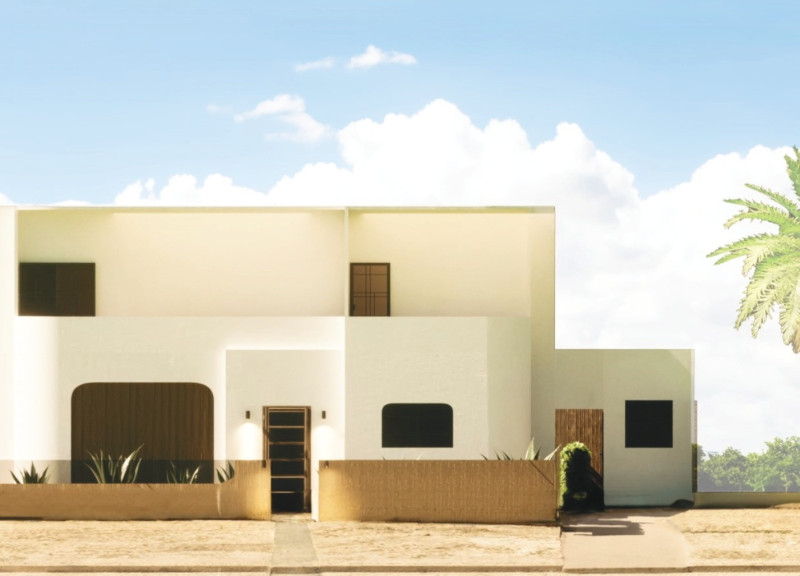5 key facts about this project
At its core, the project serves as a multipurpose facility, catering to both public and private functions. This duality of purpose is pivotal in fostering interaction among users and enhancing community engagement. The design eloquently merges various spaces such as gathering areas, work environments, and recreational zones, allowing for a seamless flow of activities. This functional diversity reflects a contemporary approach to architecture, where buildings serve as dynamic platforms for social interaction.
The architectural design employs a range of materials that contribute to both structural integrity and aesthetic quality. Common materials used in the construction include reinforced concrete, glass, timber, and steel. Each material is selected not merely for its functional properties but also for its ability to enhance the building’s visual narrative. Reinforced concrete provides the necessary framework, ensuring robust support, while glass elements create transparency, inviting natural light into the interior and promoting a connection with the outdoors. The use of timber introduces warmth, offering a natural contrast to the more industrial aspects of concrete and steel. This careful selection of materials reflects an understanding of the local climate and cultural context, demonstrating sensitivity to the environment.
One of the unique design approaches illustrated in this project is the incorporation of green spaces within the building itself. Rooftop gardens, vertical plant walls, and open-air courtyards not only serve aesthetic purposes but are also essential in promoting biodiversity. These green elements contribute to improved air quality and provide occupants with serene spaces for relaxation, thereby enhancing their overall well-being. The thoughtful integration of nature within the architectural framework underscores a commitment to sustainability and environmental stewardship, demonstrating that modern design can coexist harmoniously with natural elements.
The building’s façade is noteworthy for its dynamic interplay of textures and forms. Variations in surface treatments create visual interest while responding to the changing light conditions throughout the day. Large, strategically placed windows allow for panoramic views of the surrounding landscape, reinforcing the building's connection to its site. The arrangement of these openings ensures optimal energy efficiency by maximizing natural ventilation and minimizing reliance on artificial climate control systems. This design choice aligns with current trends in sustainable architecture, where minimizing energy consumption is a primary concern.
In terms of spatial organization, the project employs an open-plan layout that encourages versatility and movement. Clear sightlines enhance visual connectivity between spaces, fostering an atmosphere of collaboration and engagement among users. Circulation routes are carefully delineated, guiding visitors through various areas while maintaining a sense of cohesion throughout the building. This attention to movement and flow exemplifies a modern understanding of how space can influence interaction and behavior.
Further enhancing the project's functionality is the use of smart technology integrated within the architectural design. Automated systems for lighting, heating, and security not only improve user experience but also optimize energy usage, showcasing the intersection of architectural excellence and technological advancement. This level of integration indicates a forward-thinking approach that meets contemporary demands for efficiency and connectivity.
The overall architectural design embodies a commitment to creating spaces that are not only functional but also resonate with the community's identity. The project reflects a thoughtful response to urban challenges, emphasizing collaboration, sustainability, and community engagement. Through careful consideration of materials, innovative design strategies, and a strong connection to the surrounding environment, this architectural project sets a standard for future developments.
As you delve deeper into the project presentation, it is recommended to review the architectural plans, sections, designs, and the various architectural ideas represented within the project. Each element presents a facet of the design that contributes to its overall narrative and effectiveness in responding to both its function and the environment it inhabits.


 Martyrous Beniamien,
Martyrous Beniamien, 























